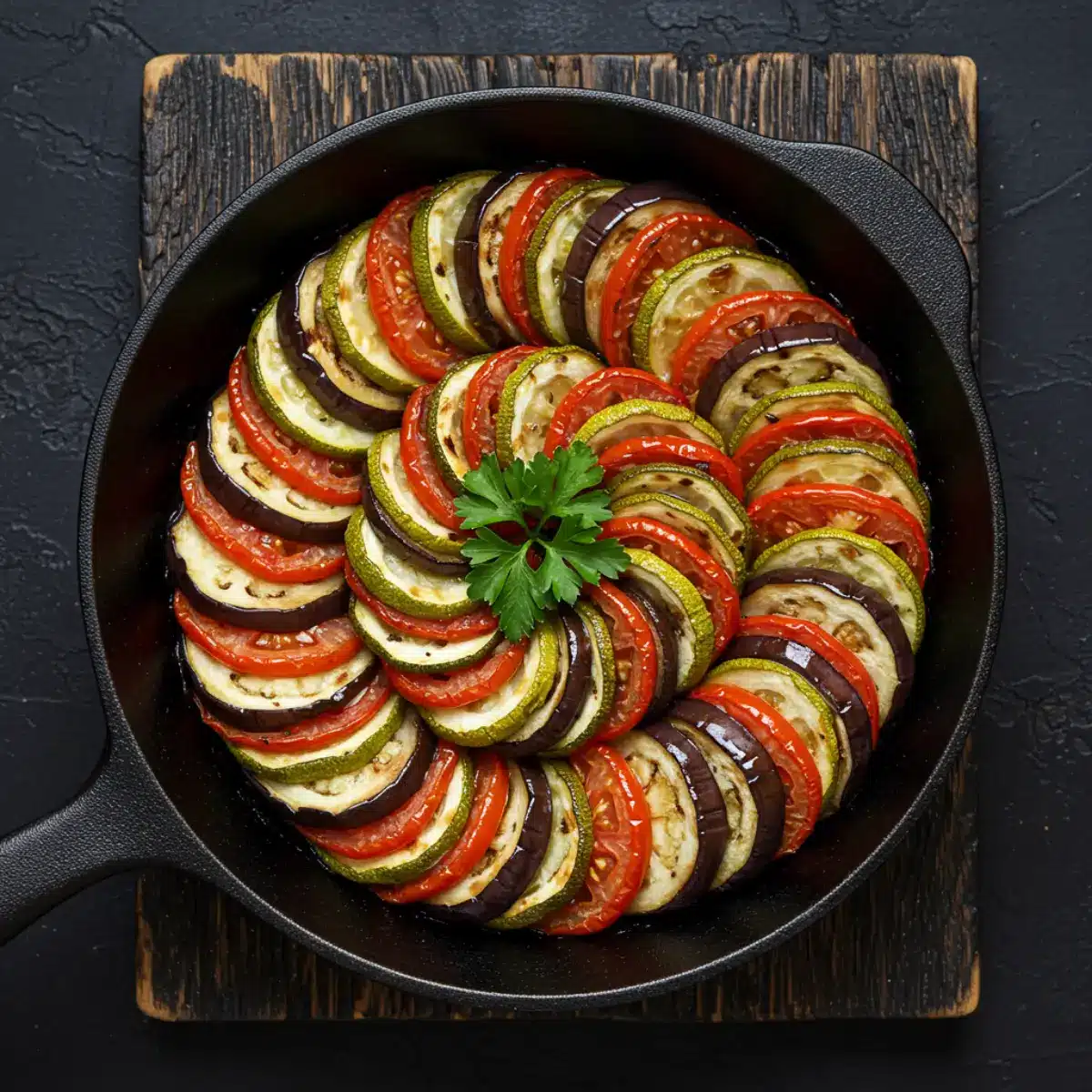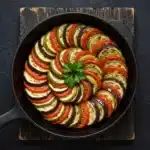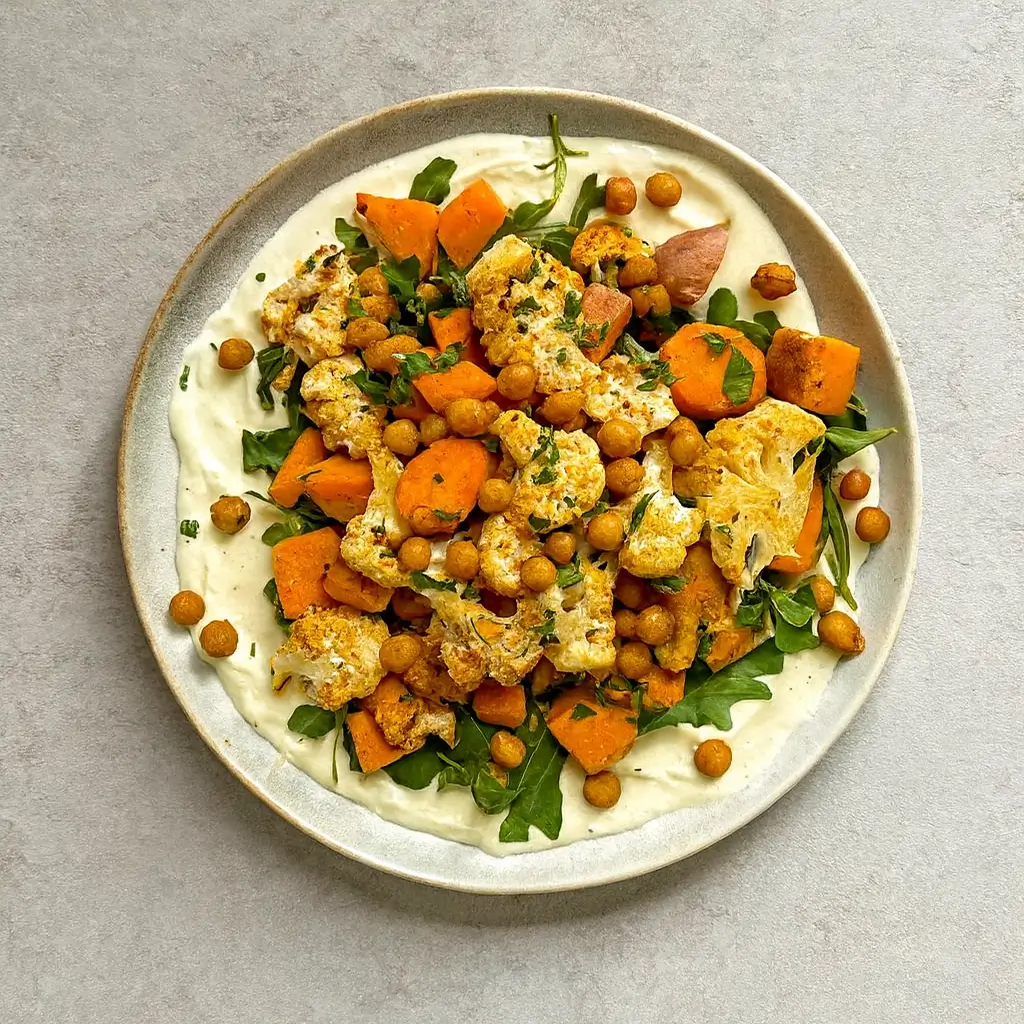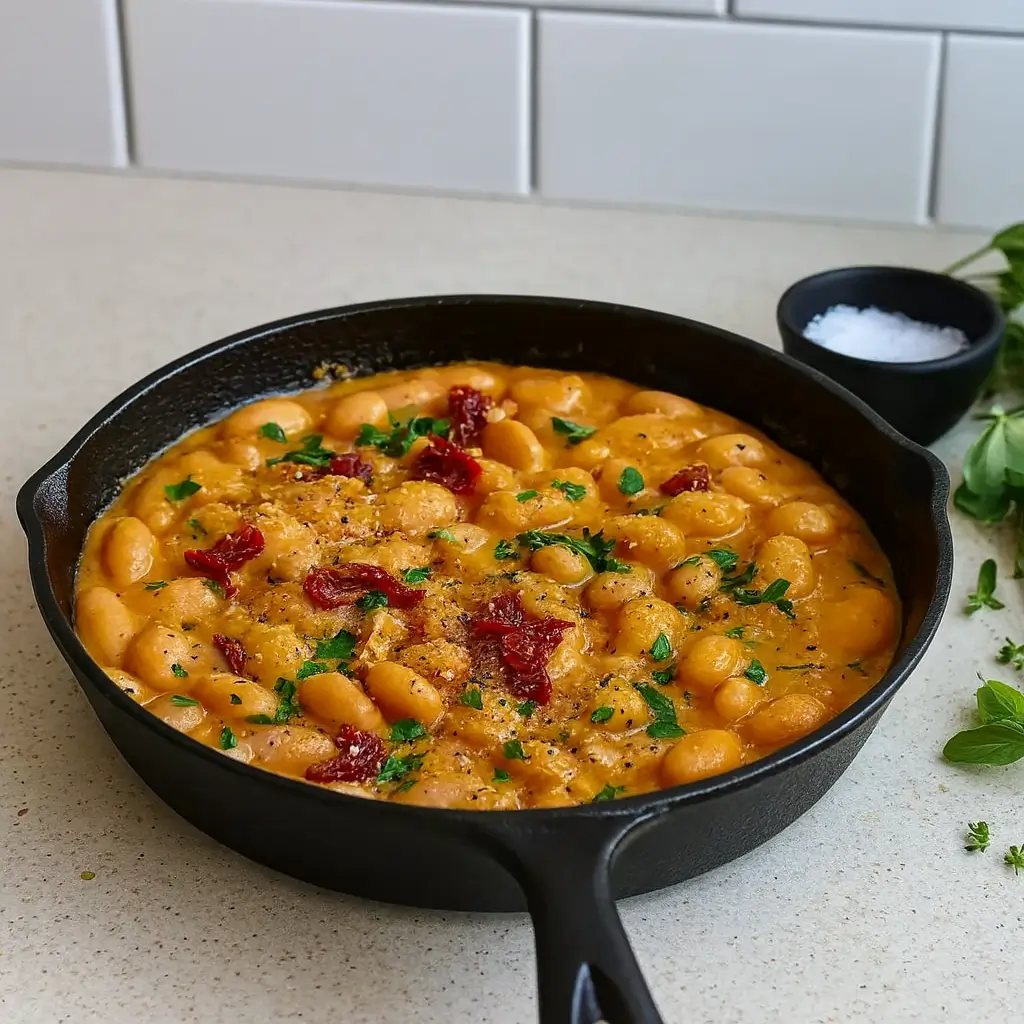Gordon Ramsay Ratatouille isn’t your average soggy stew—it’s a gorgeous, structured dish that looks as good as it tastes. With layers of colorful veggies nestled over a rich tomato sauce, it’s a dinner that feels elegant without being fussy. Ramsay’s spin respects the natural textures of each vegetable, and it shows in every bite. Whether you’re feeding a crowd or just need a meat-free option that still feels hearty, this Gordon Ramsay Ratatouille delivers big on flavor without wrecking your weeknight.
Table of Contents
What is Gordon Ramsay Ratatouille?
Gordon Ramsay Ratatouille is his no-nonsense take on the beloved French dish—made famous by both rustic chefs and Pixar alike. But Ramsay adds his signature structure and depth. Instead of dumping all the veggies into one pot and praying for the best, he focuses on texture and balance. A deeply flavored tomato base supports neatly sliced layers of eggplant, zucchini, and Roma tomatoes. It’s part comfort food, part veggie celebration, and 100% satisfying. This version ditches the mush and brings clarity, both in flavor and presentation.
Reasons to Try Gordon Ramsay Ratatouille
First of all, it’s downright stunning—and you don’t need fancy ingredients to get there. Gordon Ramsay Ratatouille makes veggies exciting (yes, even for the picky ones). It’s a wholesome way to fill your plate with color, fiber, and flavor without the heaviness of meat. Bonus: it’s a real crowd-pleaser that works for weeknights or weekend dinners. Plus, it’s vegetarian-friendly and perfect for anyone trying to get more veg without sacrificing satisfaction. And did we mention the leftovers taste even better the next day?
Ingredients Needed to Make Gordon Ramsay Ratatouille
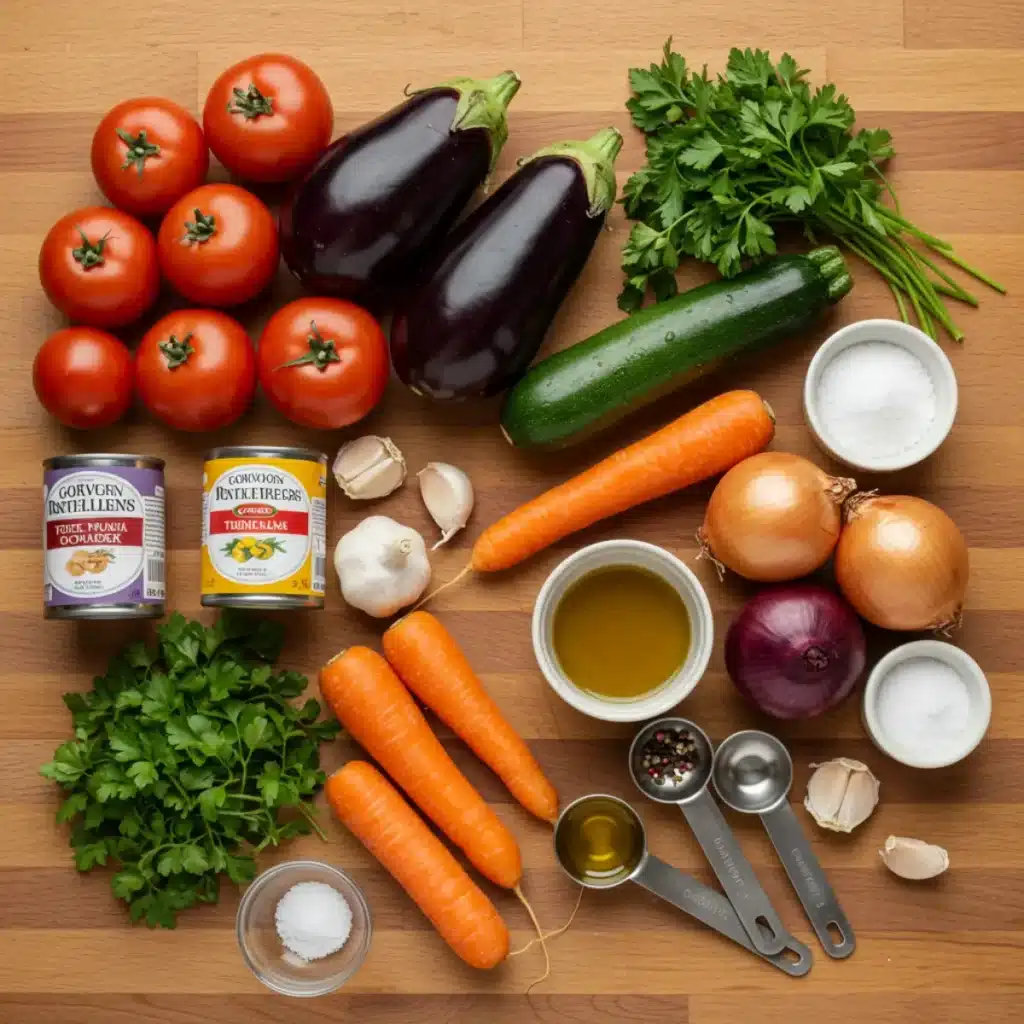
Let’s talk ingredients—and don’t worry, nothing on this list is exotic or hard to find. One of the best things about Gordon Ramsay Ratatouille is how it transforms simple, everyday produce into something downright elegant. It’s like giving your grocery store staples a five-star makeover.
For the Tomato Sauce Base
This base is what ties the whole dish together. Think of it like the warm hug underneath all those pretty veggies.
- Olive Oil (2 tablespoons): A good-quality olive oil gives richness and helps everything sauté beautifully. Don’t go crazy with the expensive stuff—just something flavorful.
- Half of a Small Onion, Finely Chopped: This adds sweetness and depth. If you’re in a rush, pre-chopped onions work in a pinch.
- Garlic (4 cloves, minced): Ramsay doesn’t hold back on garlic, and neither should you. It adds that punchy flavor that makes the sauce sing.
- Grated Carrot (about ⅓ cup): Seems random? It’s not. Carrot adds natural sweetness and a soft, earthy vibe that balances out the acidity from the tomatoes.
- Crushed Tomatoes (1 can, 14 oz): Canned tomatoes are your shortcut to slow-cooked flavor without the time commitment. Look for San Marzano or fire-roasted if you want to be a little fancy.
- Dried Basil (2 teaspoons) and Dried Parsley (½ teaspoon): These classic herbs round out the sauce. If you have fresh basil lying around, go ahead and toss in a few leaves at the end.
- Salt and Black Pepper (to taste): Season as you go—taste the sauce before you commit to the final layer. If it tastes bland now, it’ll taste bland later.
For the Vegetable Layers
This is where the magic happens. These veggies aren’t tossed in together like a stew. They’re sliced thin and layered with care—yes, it’s a little extra effort, but it pays off big.
- 1 Small Eggplant: Sliced into 3mm rounds. Not too thick, not paper thin—just enough to hold its shape without going soggy. If you’re not sure how thin 3mm is, think about the width of two stacked quarters.
- 2 Small Zucchini: Also sliced to 3mm thickness. These give the dish that signature green pop and mellow, buttery texture.
- 3 Roma Tomatoes: These are the firm, less juicy kind that roast up beautifully. Again, keep those slices even for the most satisfying bites.
- Olive Oil (2 tablespoons, for brushing): You’ll use this to lightly coat the tops of the veggies before they hit the oven. It adds flavor and helps them brown just a bit.
- Salt and Pepper (to taste): Just a pinch over the top before baking does wonders.
Optional but Handy:
- A mandoline slicer if you want those perfect 3mm slices without stressing over your knife skills.
- Fresh herbs for garnish if you’re feeling fancy.
With just these core ingredients, you’re building something that feels restaurant-worthy but doesn’t require a culinary degree or a second mortgage. These are pantry-friendly basics that, with just a bit of intention, come together to create something pretty spectacular.
Instructions to Make Gordon Ramsay Ratatouille
Before you even turn on the oven, take a deep breath. You don’t need to be Gordon Ramsay to pull this off—you just need a little patience and the right steps. Here’s how to get that structured, gorgeous ratatouille without losing your cool in the kitchen.
Step 1: Preheat Like a Pro
Set your oven to 375°F (190°C). Don’t skip this—starting with a properly heated oven is key to getting those vegetables soft and tender without drying them out.
Step 2: Build That Flavor Bomb Sauce
In a medium pan, heat 2 tablespoons of olive oil over medium heat. Add in your finely chopped onion, minced garlic, and grated carrot. Cook for about 5 minutes, stirring now and then.
Don’t rush this part—you’re building the foundation of flavor. You want the veggies soft and fragrant, not brown or crispy. If they start to stick, lower the heat and breathe through it.
Once softened, pour in the crushed tomatoes. Add dried basil, parsley, a pinch of salt and black pepper. Let the whole thing simmer for 15 minutes. Stir a few times, and give it a taste. If it feels a little flat, it probably just needs more salt or a pinch of sugar (yes, really—tomatoes can be acidic divas).
Step 3: Slice Like You Mean It
While your sauce is doing its thing, slice your eggplant, zucchini, and Roma tomatoes into even 3mm rounds. Consistency is crucial here—thick slices won’t cook evenly, and paper-thin ones will shrivel. If you’ve got a mandoline, now’s the time to feel like a kitchen rockstar.
Pro tip: Lay out your slices side-by-side on a board and season them lightly with salt and pepper. This makes layering way easier later.
Step 4: Assemble Your Ratatouille Like a Work of Art
Grab a 2-liter baking dish and pour your tomato sauce into the bottom. Spread it out evenly with a spoon—it should cover the whole base, acting as a flavorful landing pad for the veggies.
Now, layer your veggie slices on top, upright and slightly overlapping. You can go with neat rows or get creative and spiral them from the center out. Alternate the colors—zucchini, eggplant, tomato—for that Instagram-worthy look.
Step 5: Brush & Season Like a Boss
In a small dish, combine the last 2 tablespoons of olive oil with a little salt and pepper. Then, using a pastry brush—or your fingers if needed—lightly dab the mixture over the top of the vegetables. This step locks in moisture and gives the veggies a nice, roasted finish.
Step 6: Bake It (Twice)
Cover your dish with foil or a lid and bake for 30 minutes. This gives the veggies a chance to steam and soften without browning too quickly.
Then, uncover it and bake for another 15–20 minutes. You’re looking for the veggies to get slightly golden on top and cooked all the way through. If the tops start to brown too fast, loosely cover it again.
Step 7: Rest Before You Feast
Once it’s done, pull it out of the oven and let it rest for at least 10 minutes. This step is everything. The flavors settle, the sauce thickens slightly, and you avoid burning your mouth in excitement. You’ve waited this long—give it a few more minutes to become its best self.
What to Serve with Gordon Ramsay Ratatouille
You’ve just pulled a bubbling dish of Gordon Ramsay Ratatouille out of the oven, and now you’re wondering—what the heck do I serve this with?
Well, here’s the beauty of it: this dish is crazy versatile. If you want to keep things light and wholesome, serve it with a slice of toasted sourdough or crusty baguette to soak up all that rich tomato sauce. For something heartier, try spooning your Gordon Ramsay Ratatouille over creamy mashed potatoes or a bed of soft polenta—it’s pure comfort food. Need a protein? Pair it with grilled chicken, pan-seared salmon, or even a simple fried egg on top (yes, seriously—it’s magical).
And don’t forget a crisp green salad with a tangy vinaigrette to balance the warmth and richness of the dish. However you serve it, Gordon Ramsay Ratatouille plays well with others.
Want another fantastic Ramsay-approved side? Try this Gordon Ramsay Braised Cabbage—it’s comforting and flavorful without stealing the spotlight.
Key Tips for Making Gordon Ramsay Ratatouille
Here’s the thing—Gordon Ramsay Ratatouille isn’t complicated, but it’s picky. If you want the same clean, beautiful results you see on food shows, there are a few tricks worth following:
- Slice everything the same thickness. Ramsay swears by it for a reason. Keep it to 3mm thick so each veggie cooks evenly. Uneven slices = mushy eggplant and raw zucchini.
- Use a mandoline if you have one. It’ll save you time and a bit of sanity.
- Don’t skip the sauce tasting. It might seem minor, but if your tomato base tastes flat, your whole dish will suffer. Add a pinch of sugar if the tomatoes are too acidic.
- Bake covered, then uncovered. That’s the Ramsay method—first you soften the veg, then you give the tops a slight roast for color and flavor.
- Let it rest. Seriously. Ten minutes of patience transforms your Gordon Ramsay Ratatouille into a flavor-packed veggie masterpiece.
If you’re looking for more Ramsay-approved comfort dishes, check out this Gordon Ramsay Shepherd’s Pie-a rich, savory classic.
Storage and Reheating Tips for Gordon Ramsay Ratatouille
Leftovers? You’re in luck. Gordon Ramsay Ratatouille actually gets better the next day—just like stew or chili.
- To store: Let the dish cool completely, then cover tightly or transfer to an airtight container. It keeps well in the fridge for up to 4 days.
- Freezing Tip: Transfer leftovers into a freezer-safe container and store for up to 3 months. Keep in mind, the texture might be a bit softer once reheated—but still totally tasty.
- To reheat: Microwave individual portions on medium heat or reheat the whole dish in a 375°F oven for 10–15 minutes. Add a splash of water if it seems dry.
Bonus: Use leftovers as a topping for pasta, couscous, or even inside a grilled cheese for a next-level lunch.
Final Thoughts
Gordon Ramsay Ratatouille proves that simple ingredients, when treated right, can be absolutely stunning. It’s more than just a pretty plate—it’s a celebration of flavor, structure, and balance. Whether you’re feeding picky eaters or impressing dinner guests, this dish brings color, comfort, and a little culinary confidence to your table.
And remember, you don’t need a Michelin star—or a British accent—to pull it off.
If you loved this recipe, you’ll also want to try the Gordon Ramsay Pan-Fried Salmon—another dish that pairs beautifully with ratatouille.
Visit our Pinterest for regular slow cooker recipe updates, or join our Facebook discussions where cooking fans exchange their favorite hearty meal ideas.
FAQs
Has Gordon Ramsay made ratatouille?
Yes! Gordon Ramsay has shared several takes on ratatouille, especially ones that focus on technique and presentation. His structured, layered version gained attention for ditching the traditional stew and highlighting each ve
Which restaurant tried to sue Gordon Ramsay?
Back in the early 2000s, Ramsay faced legal tension with Aubergine, the restaurant where he made his name. There were disputes during his exit, but nothing stopped his rise to stardom.
What is Gordon Ramsay diagnosed with?
Gordon Ramsay has publicly shared that he suffers from arthritis and knee pain, partly due to years of long hours in the kitchen and intense physical demands on set.
What is the most famous Gordon Ramsay dish?
Without a doubt, Beef Wellington is Gordon Ramsay’s most iconic dish. It’s a signature on his menus and a staple challenge on his shows. If you’re in the mood for another showstopper, try the Gordon Ramsay Venison Wellington.
Gordon Ramsay Ratatouille Recipe
Forget everything you thought you knew about ratatouille. This vibrant, oven-baked version is based on Gordon Ramsay’s bold approach—structured layers of fresh vegetables over a rich, herby tomato sauce. It’s simple, striking, and full of clean, honest flavor. Perfect for busy weeknights or impressing guests with something wholesome and beautiful.
- Prep Time: 20 minutes
- Cook Time: 45 minutes
- Total Time: 1 hour 5 minutes
- Yield: Serves 4
- Category: Dinner
- Method: Baked
- Cuisine: French
- Diet: Vegetarian
Ingredients
For the Sauce:
- 2 tablespoons olive oil
- ½ small onion, finely chopped
- 4 cloves garlic, minced
- ⅓ cup grated carrot
- 1 can (14 oz) crushed tomatoes
- 2 teaspoons dried basil
- ½ teaspoon dried parsley
- Salt and freshly cracked black pepper, to taste
For the Vegetables:
- 1 small eggplant, sliced into 3mm rounds
- 2 small zucchini, sliced into 3mm rounds
- 3 Roma tomatoes, sliced into 3mm rounds
- 2 tablespoons olive oil (for brushing)
- Salt and pepper, to taste
Instructions
Step 1: Preheat the Oven
Set your oven to 375°F (190°C) and let it fully heat while you prep the sauce and vegetables.
Step 2: Make the Tomato Base
In a skillet over medium heat, warm 2 tablespoons of olive oil. Sauté the onion, garlic, and grated carrot for about 5 minutes until soft and fragrant—don’t let it brown.
Step 3: Simmer the Sauce
Add the crushed tomatoes, basil, parsley, and a pinch of salt and pepper. Stir occasionally and let it simmer for 15 minutes to develop deep flavor.
Step 4: Slice the Vegetables
While the sauce simmers, evenly slice your eggplant, zucchini, and Roma tomatoes to about 3mm thick. A mandoline makes this quick and consistent.
Step 5: Assemble the Dish
Spread the tomato sauce into the bottom of a 2-liter baking dish. Arrange your sliced vegetables vertically in alternating layers, forming rows or a spiral pattern.
Step 6: Brush and Bake
Whisk together the remaining olive oil with salt and pepper. Brush it over the tops of your veggies. Cover the dish with foil and bake for 30 minutes. Then remove the cover and bake another 15–20 minutes until the tops are slightly browned.
Step 7: Let It Rest
After baking, let the ratatouille rest for 10 minutes before serving. The flavors settle, and the texture improves beautifully.
Notes
- tick to even slices (3mm) for perfect cooking.
- A two-stage bake gives you both tenderness and caramelized tops.
- Resting the dish is non-negotiable—it brings everything together.

